Cooler Master V750 SFX Gold Power Supply Review
Mike Sanders / 4 years ago
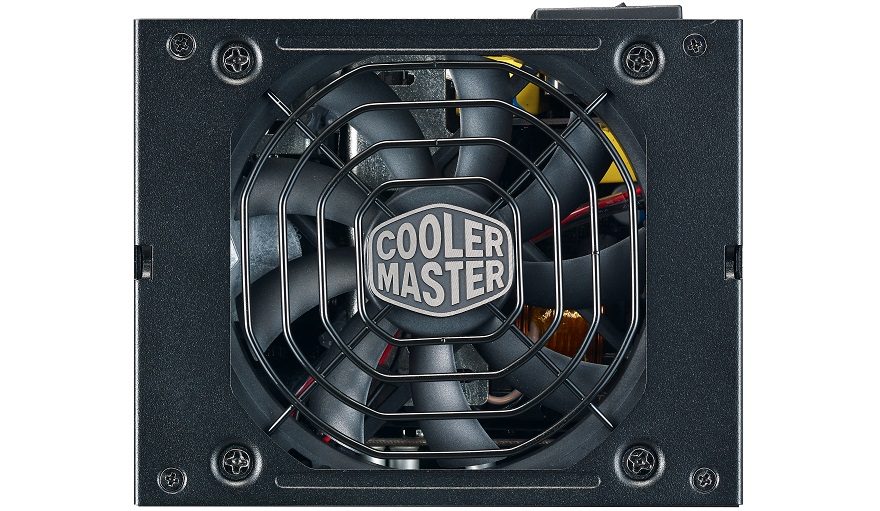
It’s certainly been a very busy spell for Cooler Master and particularly with their power supplies as we have seen the company launch two separate model series within just the last few weeks. With those being designed for ‘full-sized’ systems, however, you have been a little frustrated at your lack of options for more space-sensitive systems.
Fret ye not though! If you need a new power supply for your compact PC, the V750 SFX Gold might just be the perfect solution for you.
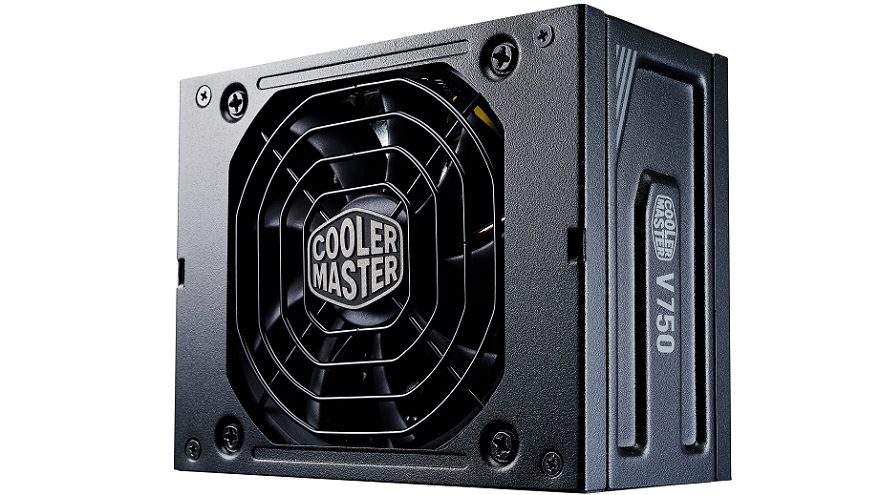
Cooler Master V750 SFX Gold
Designed as an SFF PSU, while the Cooler Master V750 SFX Gold might be small in stature, it doesn’t skimp on some pretty amazing features! 80-Plus Gold efficiency rated with a fully-modular design? It’s already ticking off some pretty important boxes for the savvier of PSU consumers. Backed-up with a huge 10-year warranty, however, for big or small systems, the V750 SFX Gold looks like a great choice!

What Does Cooler Master Have to Say?
“The V SFX Gold is Cooler Master’s debut entry into SFX power supply units. After much demand, we have finally produced a PSU specifically made to meet the needs of mini-ITX system builders. This unit delivers top-shelf performance in 550, 650, 750, and 850 watt levels. It offers an 80 PLUS Gold efficiency rating, full-modular cabling, a 92mm FDB fan, 16AWG PCIe high efficiency cables, 100% Japanese capacitors, and a 10 year warranty. And with the included SFX-to-ATX bracket, this unit is compatible with cases ranging from mini-ITX all the way up to E-ATX systems.”
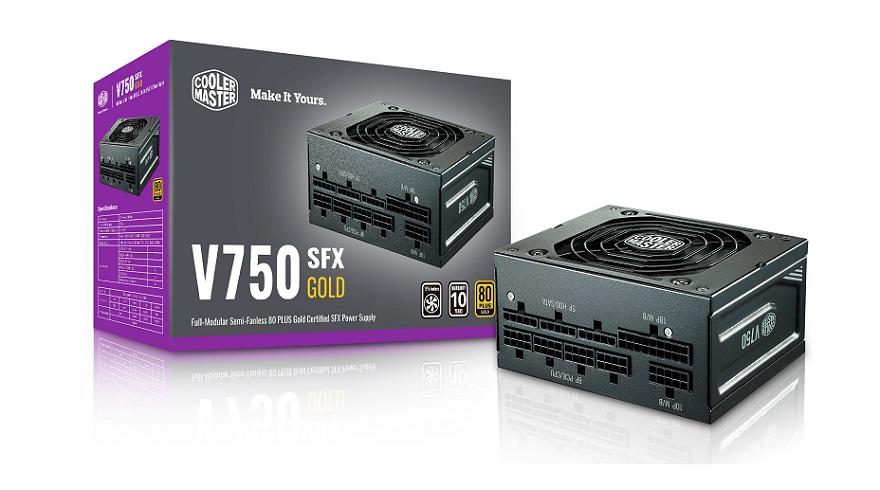
Features
- 80 Plus Gold Efficiency
- SFX Form Factor
- SFX-to-ATX Bracket
- Semi-fanless Mode
- Full-modular Cabling
- 10 Year Warranty
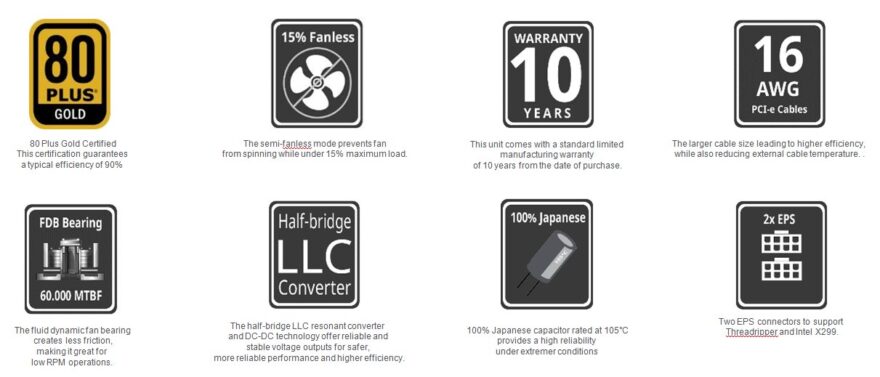
Specifications
For more details specifications, please visit the official product page via the link here!

Connections
As this is a fully-modular power supply, one of the key perks of this design is only having to install the cables your system needs. With that in mind, however, it’s also vitally important to know that you still get enough of the cables you need. Thankfully, the Cooler Master V750 SFX Gold provides you with more than enough solutions for even the more-elaborate end of gaming PC ownership.


Packaging
Keeping with the traditional Cooler Master style, the packaging is predominantly dominated by black and silver with purple highlights. On the front of the box, you’re given a nice clear view of the power supply with a particular emphasis placed on it having a fully-modular design.
In addition, all of the key features and details are provided to you at a glance.
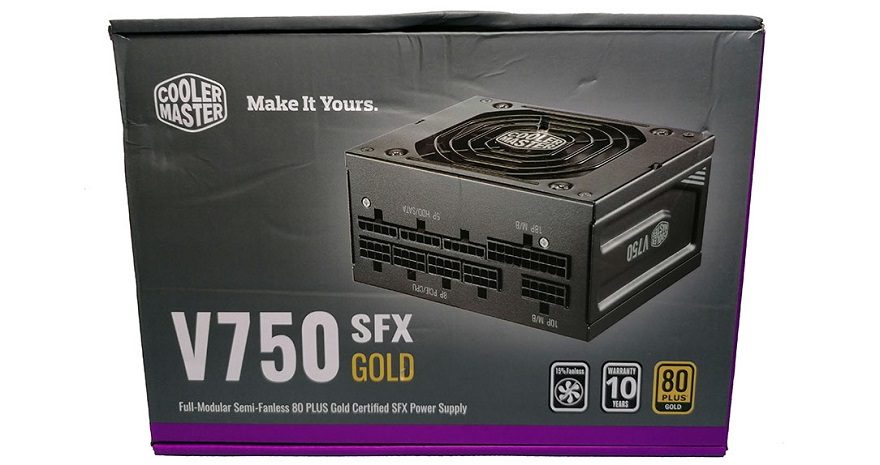
The rear of the packaging goes into far more detail about the Cooler Master V750 SFX Gold including it’s specifications, performance charts, cabling, and more details on its features. Overall, while the packaging doesn’t offer anything too unusual, the information provided is both excellent and easy on the eye.
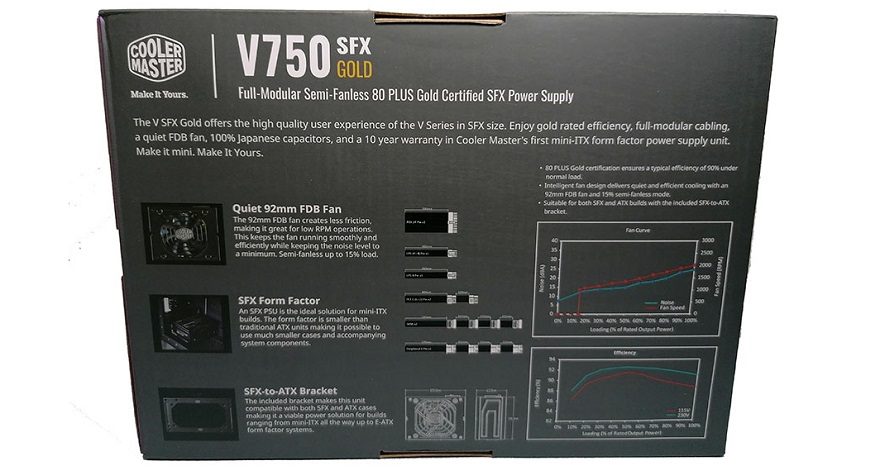
Accessories
As this is a power supply, you’re shouldn’t expect to get too much in terms of accessories and while that is certainly the case here, that doesn’t mean that Cooler Master hasn’t provided you with some useful additions. While you are given a quantity of zip-ties and branded cable management straps, the key aspect is the SFX-to-ATX conversion bracket. The inclusion of this really opens up the suitability of this power supply to a lot more systems than had it simply stuck to it’s SFF remit.
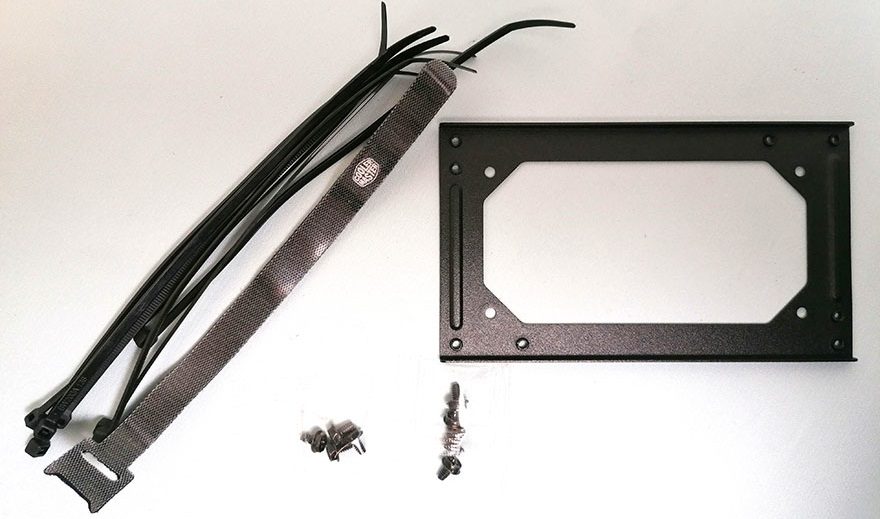
A Closer Look
Out of the box, your first impression is taken by just how small the design of this power supply is. Yes, it’s fairly standard for SFF power supplies, but given the pretty high specifications this PSU has, part of you is more than a little surprised Cooler Master has managed to squeeze them into a package this small.
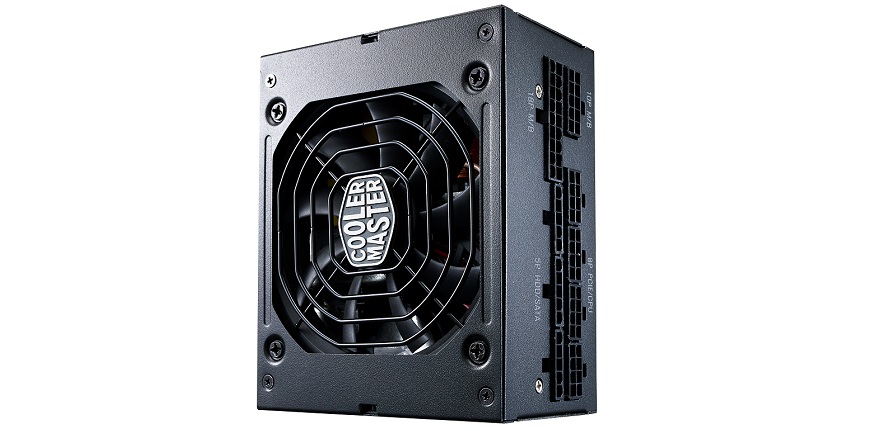
A look at the front shows the main fan which is well situated in a central location. With some branding present, Cooler Master has stuck a good balance here between adding a little promotional material while not detracting from the aesthetic.

The base of the power supply contains a label featuring all of this power supplies technical information. While this will likely mean nothing to the vast majority of consumers, for those of you (like me) to whom this information is relevant, it’s nice to have it clearly displayed in such a convenient location.

The power input bank to the Cooler Master V750 SFX Gold is well organized with each particular section being denoted for it’s use. Admittedly, Cooler Master has used some code here so it’s not entirely intuitive for the novice PC builder. On the whole, however, with it’s well spaced out design, you shouldn’t have any problems inserting or removing the cables you need for your PC.
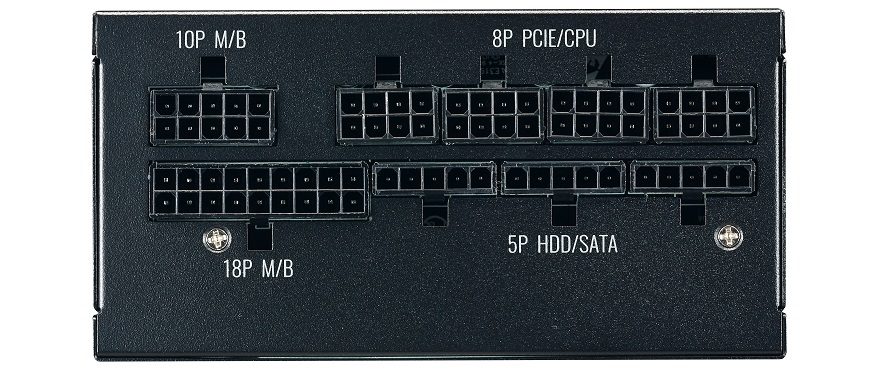
The rear of the power supply offers a nice and large vented section that should help promote good airflow. While we do often see larger areas vented in more traditional power supplies, the limited size of the Cooler Master V750 SFX Gold hasn’t, at least in our view, compromised anything here.
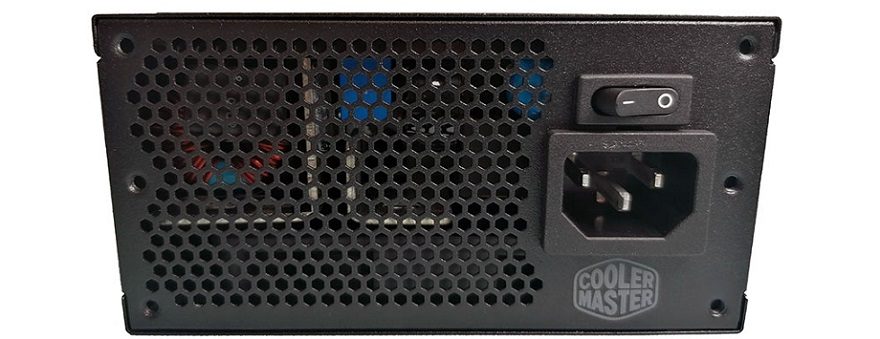
The sides of the power supply feature a little bit of product branding which is both well placed and, overall, adds well to the aesthetic of the design.
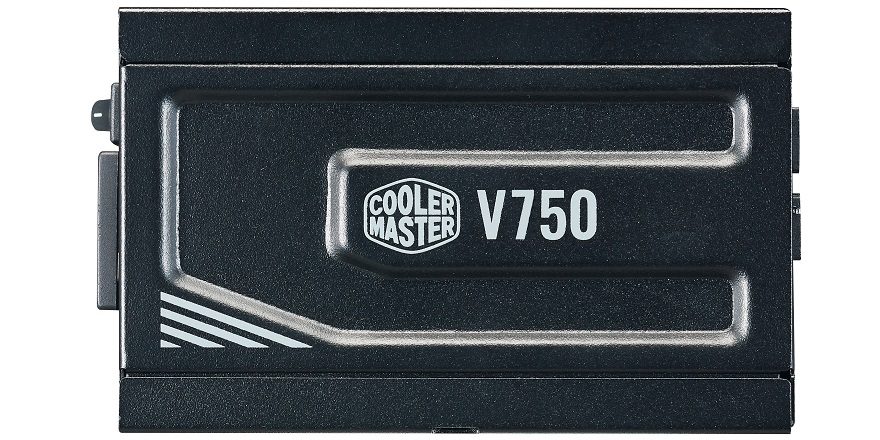
On the whole, the Cooler Master V750 SFX Gold, while small, seems to have an excellent design. While it admittedly doesn’t feature too much in terms of aesthetics, it looks like a very solid PSU with more than a few little touches to make it visually appealing.

Cabling
In regards to the cabling, the Cooler Master V750 SFX Gold certain provides you with a generous quantity and, it should be noted, the cables are of a very decent length. Too often we see SFF power supply comes with really short cables and while this should, in the grand scheme of things, be perfectly fine, it can often limit your success in terms of management.
With the cables also labelled to denote their use, there is absolutely nothing to fault here.

Internals – A Look Inside!
As this is a SFF power supply, in our experience this can often represent a very mixed bag of results. Specifically, when it comes to looking at the internal aspects of the design. Put simply, some can be amazingly cramped with cables weaving through very tight gaps and, in other instances, a little more care has been put into ensuring a good airflow.

Fortunately, the Cooler Master V750 SFX Gold definitely falls into the latter category. Yes, it is still a little bit tight in their, but given the limitations of the size, what Cooler Master has achieved here is a surprisingly clean design.

In addition, as per one of their features aspects of this power supply, we can not only confirm that this PSU features a main Japanese capacitor, but also that it comes from a highly-reputable manufacturer. In addition, with it being rated to 105C, this is about as good as it gets and exactly what you expect to see from a quality design.

Overall Thoughts!
Although it may be small, the Cooler Master V750 SFX Gold is absolutely faultless in terms of it’s aesthetics and design. All going well, these are factors that will translate into some very favourable testing results. There is, however, only one way to find out. Let’s get this PSU hooked up and see what happens!

Methodology & Testing
At eTeknix we take the power supply testing procedure very seriously and have invested a lot of resources into acquiring the appropriate testing equipment. For all power supply reviews, we test the power supplies with dedicated power supply testing equipment. This means we are able to get the most accurate results from our testing as opposed to using software benchmarks (such as OCCT) or multi-meter readouts which are broadly inaccurate.
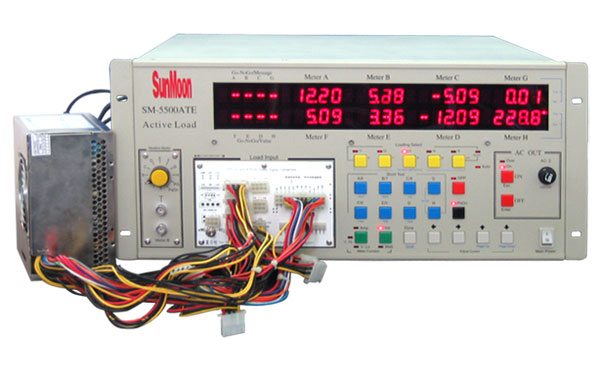
Testing Hardware
- Sunmoon SM-5500ATE Active Load Tester (1200W rated)
- Stingray DS1M12 USB Oscilloscope
- Voltcraft DT-10L laser tachometer
What the eTeknix Test Procedure Involves
- Testing each power supply at 20/40/60/80/100% load (with load balanced across all rails) and measuring PFC (power factor correction), efficiency (actual power divided by power “pulled at the wall”) and voltage regulation (deviance from expected voltages of 3.3/5/12 on the main rails).
- Measuring ripple with an oscilloscope at 20/40/60/80/100% load.
- Measuring fan speed after a stabilisation period of five minutes at each load scenario using the Voltcraft DT-10L laser tachometer and a reflective strip on the fan.
- Testing each power supply’s OPP (Over Power Protection) mechanism and seeing how many watts each power supply can deliver before shutting down
Other Things to Consider
- We recognise that a single 12-volt cable can provide only 6 Amps before overheating (which corrupts voltage regulation and efficiency) and so we used an adequate number of cables for each power supply to ensure there is not efficiency loss from poor cables selection
- Our Sunmoon SM-5500ATE power supply tester is not capable of testing more than 300W on each of the 12-volt rails so where a power supply provides more than 300W on a 12-volt rail that power is distributed over multiple 12-volt rails on the load tester. For example a power supply with one 12 volt rail supplying 750 watts would be spread equally over three 12 volt rails on the load tester, a power supply with two 450W 12v rails would be spread over four 12v rails on the load tester, two 225W 12v rails for each of the 12v rails on the unit.
- We use the same time scale and horizontal millivolt scale on our oscilloscope for all ripple tests, that is a 20ms T/DIV (horizontal) and a 0.02 V/DIV (vertical) meaning the scale is from -80mV to +80mV, ATX spec dictates that the 12v rail must fall within 150mv of ripple and the 3.3/5 within 50mv so that scale allows us to include both 150 and 50mV peaks. (Some older PSU reviews use different scales which were later ditched as the visual representation they give is inadequate, in these reviews written measurements are provided only).
- Deviance is the terminology used to represent the way voltages diverge from the expected values
Voltage Regulation
To test voltage regulation we load the power supply to five different load scenarios that give an equal spread of load across every single rail. So that means 20% on all rails, 40% on all rails and so on. We then calculate the average deviance of each rail from its expected voltage. Ideally, anything of +/- 2% regulation is seen as a very good result.
Power Efficiency
Power efficiency is measured by calculating actual supplied wattage divided by the wattage drawn at the wall/plug, multiplied by 100 to give a percentage. We then compare that to the particular 80 Plus certification the company claims to see if it meets that. You can see the 80 Plus certifications below, we always test power supplies at 230v.
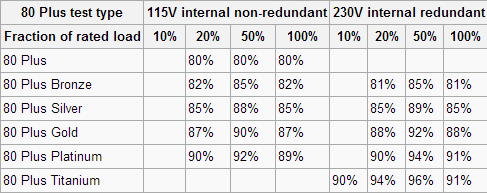
Power Factor Correction
Power Factor Correction is the ratio of the real power flowing to the load, to the apparent power in the circuit. The aim of PFC is to make the load circuitry that is power factor corrected appear purely resistive (apparent power equal to real power). In this case, the voltage and current are in phase and the reactive power consumption is zero. The closer the number to one the better as this allows the most efficient delivery of electrical power (Source – Wikipedia).
Ripple
Noise and Ripple can easily be measured by an oscilloscope. These show how much voltage fluctuation there is on a particular rail. We tested the rail stability of the 3.3-volt, 5-volt and 12-volt rails using an identical time and millivolt scale for all graphs. millivolt ripple is measured by the peak to peak size of the voltage curve.
The latest ATX 12 volt version 2.3 specifications state that ripple from peak to peak must be no higher than 50 millivolts for the 3.3-volt and 5-volt rails, while the 12-volt rail is allowed up to 120 millivolts peak to peak to stay within specifications. Millivolt figures are stated to the closest increment of 5 given their variability.
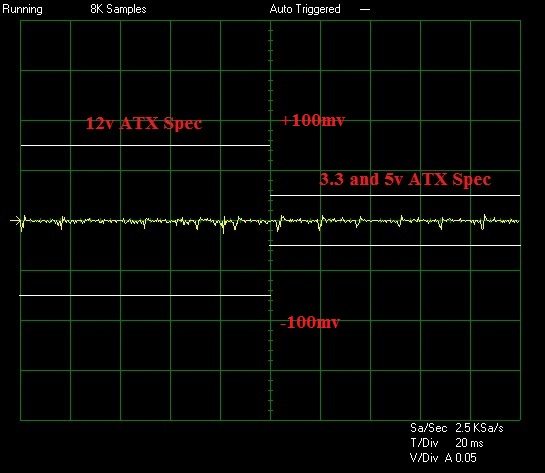
OPP
Power supplies often quote as having various protection mechanisms such and the most important of these is Over Power Protection. In our testing we crank up the power draw until the power supply either shuts down (meaning the OPP mechanism is present and working) or blows up (meaning it is either not present or not working). We then note the maximum power consumption before the power supply shut down, or before it blew up.
Fan Speed
When testing in a power supply laboratory it is difficult to take fan noise readings as the noise from the Sunmoon test equipment and air conditioning corrupts everything. The next best thing in our circumstances was reading off the fan speed with a tachometer to get an idea for the noise. The ambient temperature during testing held constant at 22 degrees, with 1 degree of variation. Each power supply had a consistent time period of 5 minutes to stabilise between each load scenario.
In my experience, the following general relationships apply between noise levels and fan speeds, though it can vary greatly between the type of fan used.
- Below 800 RPM – Inaudible/Silent
- 800 to 1000 RPM – Barely audible
- 1000 – 1200 RPM – Audible but still quiet
- 1200 – 1400 RPM – Moderately noisy
- 1400 – 1800 RPM – Noisy
- 1800 RPM or above – Intolerable
Efficiency
The Cooler Master V750 SFX Gold has been official certified as having a ‘Gold’ efficiency rating and in regards to our testing, we can 100% confirm this to be correct. In fact, this PSU performs quite notably higher than that remit and almost creeps into Platinum territory. The margins are probably a bit too close for Cooler Master to attempt to get that rating here, but in terms of ‘Gold’, this is very much at the top of the scale!
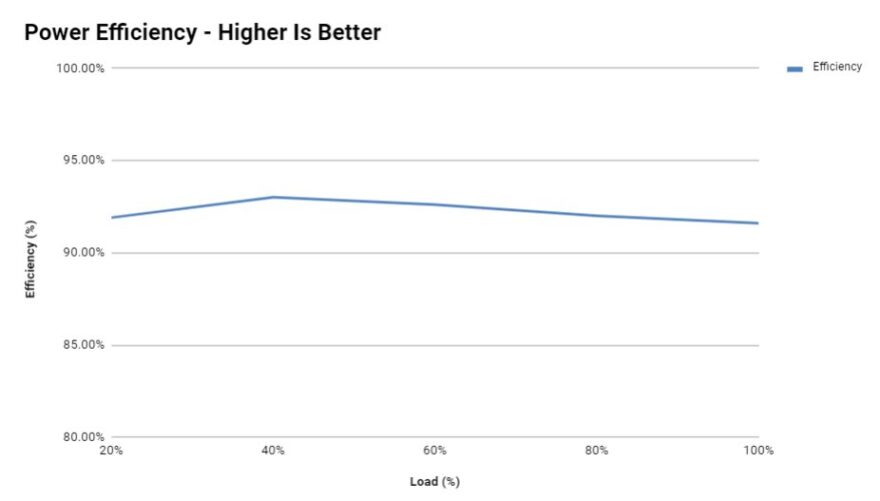
PFC (Power Factor Correction)
There are always some concessions to be made when it comes to small-factor designs. They are, after all, attempting to replicate the performance of larger designs within a clearly much smaller space. With that in mind, while the PFC results are on the low side up until the 50% mark, after that point, they get significantly better. Put simply, the PFC results are a lot happier as and when you’re asking this power supply to work harder.

Voltage Regulation
Despite showing a little deviance from the ideal output, the main focus of praise for the Cooler Master V750 SFX Gold undoubtedly has to go to the impressively low average deviancy. Across all the results, and particularly the 12V rail, the figures are more than acceptably good. Admittedly, the -12V is a little more excitable, but in modern system designs, this isn’t exactly an important component. Even then though, the results are still well within acceptable remits.

Ripple
Despite not representing any notable factors of their marketing or product features, the ripple results provided by the Cooler Master V750 SFX Gold are remarkably good. Achieving a maximum of 12.6 across all of our testing, this a massively below the EU requirement of 50 and, with this in mind, it clearly demonstrates just how cleanly the power is delivered.
Cooler Master may not talk about this, but based on these results, we have absolutely no idea why they haven’t!
| Load (%) | 3.3V Ripple | 5V Ripple | 12V Ripple |
| 20 | 3 | 4 | 18 |
| 40 | 3 | 5 | 14 |
| 60 | 3.2 | 5.2 | 12.4 |
| 80 | 3.2 | 5.4 | 12.6 |
| 100 | 4 | 6.4 | 12.2 |



Over Power Protection and Max Wattage
As part of our testing process, we can confirm that the OPP provided with the V750 SFX Gold worked absolutely as it should with no concerns at all on our part. In terms of wattage wiggle room, in all honesty, we didn’t expect this to provide much over the rated 750 as this is a small factor design. That being said, however, achieving 882 watts before the protections kicked in is still pretty impressive with it coming in at around 15% above the rated value.

Fan Speed
With the Cooler Master V750 SFX Gold hitting around 2000RPM while at 80-100% load, this might on the surface sound like a ridiculously high figure and if this was a standard power supply, we would agree. When you consider, however, that this contains an 92mm fan, it clearly has to work a lot harder than a standard 120mm often found in ‘normal’ power supplies.
Even then, however, we should note that despite the figure, the noise levels were remarkably low. Cooler Master has clearly chosen the fan wisely for this power supply as although it runs pretty quickly, it’s also whisper quiet and, as such, should do its job admirably while barely being notable among the other components within your system.

How Much Does it Cost?
Although pending specific confirmation from retailers, Cooler Master has informed us that the SFX 750 Gold will retail for a price in the region of £129.99. While this might seem initially as quite an expensive price for a power supply, it does bear noting, very specifically, that this packs a remarkably number of features, more akin to full-sized power supplies, in a very small package.
Put simply, if you think it’s expensive, I promise you that Cooler Master has spent that money on what is clearly a difficult, but effective design.
Performance
As this is a small factor power supply, there will always be some limitations if you directly compare it to standard full-sized (standard) models. Put simply, there’s only so much performance you can cram in a space as small as this. Despite that fact, however, Cooler Master has still done a really remarkably job here. Not only did this pretty much easily handle all of the tests we threw at it, but in many instances, it did remarkably better than it had any expectation to.
The clear highlights come in the fact that this nearly achieves a platinum efficiency level, and providing some of the lowest ripple results we have seen from a small factor design, Cooler Master has packed a lot of punch in this small package!
Practicality & Functionality
Although this is primarily a SFX power supply, thanks to the included bracket this is also entirely 100% suitable and compatible with ATX chassis designs. As such, this power supply definitely has a wide range of applications that should make it highly desirable for many users. With it’s sleek design and excellent cable configuration as well, the only minor downside is their length which isn’t overly generous. That being said though, we believe that would only provide an issue if you were to attempt to install this in a full-sized chassis. And why would you do that?…
Should I Buy One?
The Cooler Master SFX Gold has certainly been designed to work best with specific configurations and most notably small-factor PC designs. With that being said, however, this power supply is remarkably much more substantial in terms of its performance potential than it’s small stature would suggest. Coming with 750 watts of power and a Gold-Efficiency rating, this ticks all of the right boxes and, quite frankly, if you’re in the market for a PSU for your new or next compact PC build, this would undoubtedly make a truly excellent choice!




















